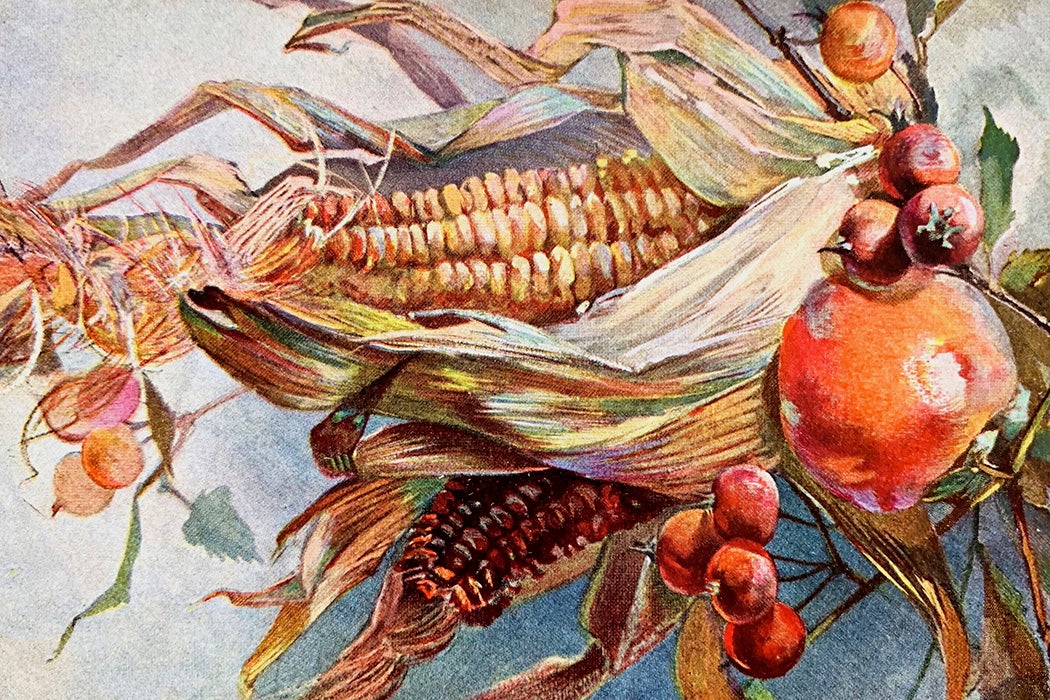“We gotta go, gotta get the job done,” American statesman Alexander Hamilton raps in Lin-Manuel Miranda’s musical Hamilton. “Gotta start a new nation, gotta meet my son.” But what on earth were the inhabitants of this new nation going to eat?
In an article in Early American Literature, scholar Mark McWilliams turns to novels, cookbooks, and menus to examine how the idea of simple fare bolstered a new national identity for Americans.
“As part of the emerging myth of republican simplicity, novelists…introduced fictive representations of local food and reimagined the role of domestic labor—and, in the process, helped define American culture by encoding food with social and moral meaning,” he explains. In this way, eating practices “helped locate individuals and the nation itself within the central debate between what came to be seen as European luxury and what was claimed as American virtue.”
For newly independent Americans, the subject of food was not neutral. Dietary choices carried ideological connotations, with “old English ways now tainted by association with monarchy and new French alternatives already marked by continental decadence,” as McWilliams puts it. “In the end, rather than change eating habits shaped through years of adapting local ingredients to British tastes, Americans sought to redescribe them, to claim an American identity for foodways that would remain fundamentally British well into the nineteenth century.”
Importantly, dishes developed by British colonists were cast in a new light after the revolution: as a symbol of Americans’ difference from “the luxuries and hypocrisies” of European culture. This philosophy—republican simplicity—“reinterpreted the necessities of often harsh colonial life as a model for a new society,” writes McWilliams.
For example, the narrator of Lydia Maria Child’s 1824 novel Hobomok “carefully details the contents of his first meal” in the colonial outpost that would become Salem, Massachusetts. The narrator documents a menu comprising “roasted pumpkin, a plentiful supply of clams, and coarse cakes made of pounded maize,” while the character of Lady Arabella similarly declares that she “must learn to eat hominy and milk, and forget the substantial plum puddings of England.”
The text’s attention to ingredients such as pumpkin, maize, and hominy is a reminder of how much the early settlers’ cuisine relied on Native American food and cooking techniques.
“Like the description of the narrator’s first meal, Lady Arabella’s comparison is carefully structured to reflect the difference of both quantity and refinement of the ‘pilgrim’s fare’ and the cuisine of the Old World,” adds McWilliams, who argues that the novel “exemplifies the use of food in early American novels to establish the distance of the New World from the refinements of English life.”
But, since the English had already adopted “culinary plainness” as a political symbol against the French, Americans had to put their own spin on republican simplicity. And they did so by “celebrat[ing] certain local ingredients as the basis of a truly American cuisine,” says McWilliams.
Corn, which had been a crucial substitute for European wheat, came to the forefront of this debate, with Benjamin Franklin proclaiming to an English interlocutor that “Indian corn, take it for all in all, is one of the most agreeable and wholesome grains in the world and that johny [sic] cake or hoe cake, hot from the fire is better than a Yorkshire muffin.”
Meanwhile, maple sugar and molasses had long replaced refined sugar in the American diet. But an ingredient initially used by British colonists would become a touchstone for revolutionaries, too.
“[T]he colonial boycott of imported sugar following the Sugar Act of 1764 transformed the use of molasses into a political act; John Adams called molasses ‘an essential ingredient in American independence,’” McWilliams explains. Cornmeal and molasses are inevitably mentioned in Amelia Simmons’s forty-seven-page American Cookery, which was originally published in 1796 and was the first cookbook written in the United States.
Indeed, Ellen Plante, the author of The American Kitchen 1700 to the Present (1995), remarks of a later edition of American Cookery that “the new spirit of republicanism that echoed throughout the land could be glimpsed in [Simmons’s] recipes for ‘Independence Cake’ and Election Cake.’”
The purported republican simplicity of American cuisine remained a moral issue well into the next century. In the mid-1800s, McWilliams writes, “the emphasis on simple, wholesome food associated with republican simplicity came to symbolize a housewife’s care for her family.”
Weekly Newsletter
“Because the food associated with republican simplicity symbolized the reimagined past, depictions of these foods often worked as loaded references to the other elements of the myth,” he adds. By then, the significance of such simplicity had become “a response to larger changes in a society struggling to understand the effects of increasing industrialization” too.
So, in dining rooms and in libraries alike, plain fare remained essential to the American identity, as well as to the idea of “the progress of American society” away from a European heritage.







